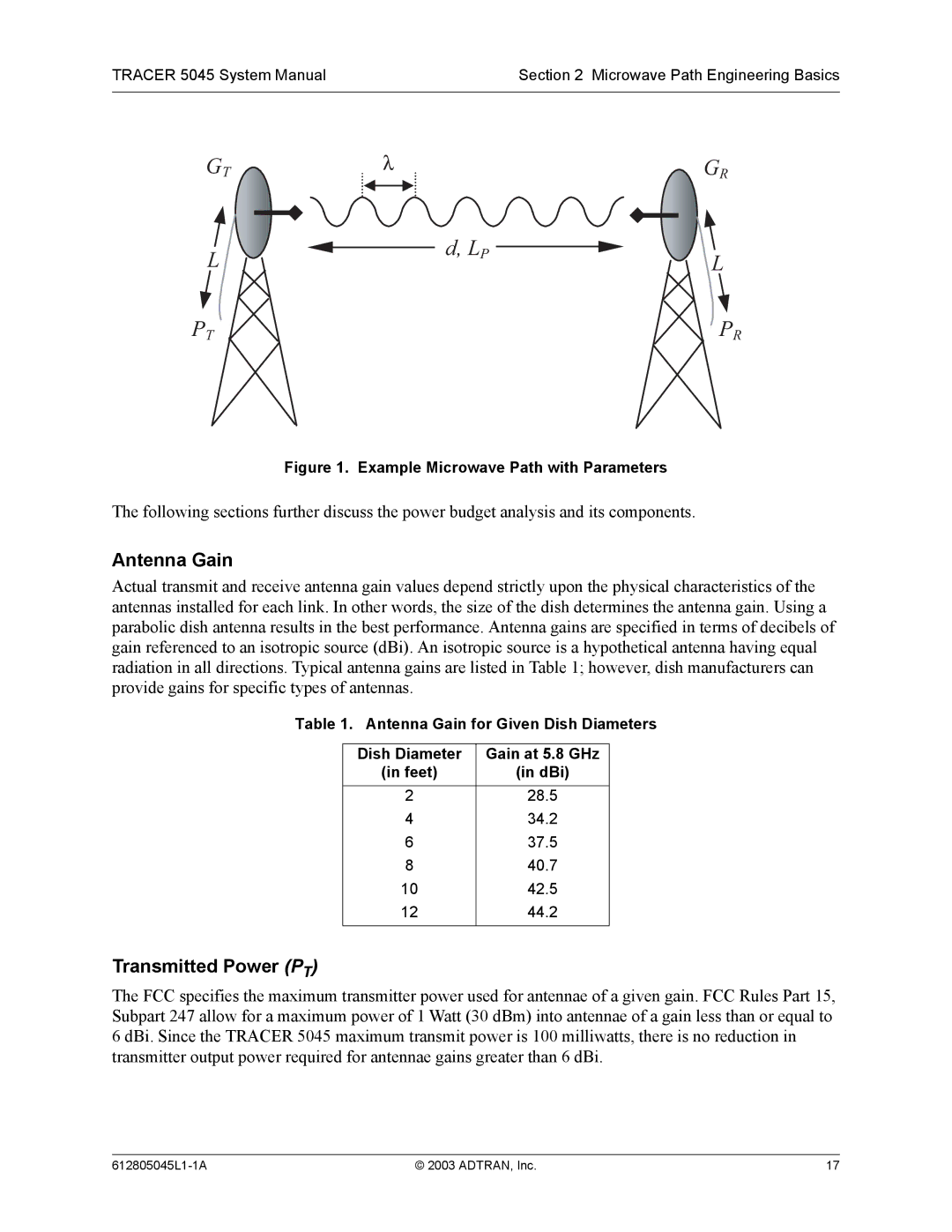
TRACER 5045 System Manual | Section 2 Microwave Path Engineering Basics |
|
|
GT
L ![]()
![]()
PT
λ
d, LP
GR
![]()
![]() L
L
![]() PR
PR
Figure 1. Example Microwave Path with Parameters
The following sections further discuss the power budget analysis and its components.
Antenna Gain
Actual transmit and receive antenna gain values depend strictly upon the physical characteristics of the antennas installed for each link. In other words, the size of the dish determines the antenna gain. Using a parabolic dish antenna results in the best performance. Antenna gains are specified in terms of decibels of gain referenced to an isotropic source (dBi). An isotropic source is a hypothetical antenna having equal radiation in all directions. Typical antenna gains are listed in Table 1; however, dish manufacturers can provide gains for specific types of antennas.
Table 1. Antenna Gain for Given Dish Diameters
Dish Diameter | Gain at 5.8 GHz |
(in feet) | (in dBi) |
|
|
2 | 28.5 |
4 | 34.2 |
6 | 37.5 |
8 | 40.7 |
10 | 42.5 |
12 | 44.2 |
|
|
Transmitted Power (PT)
The FCC specifies the maximum transmitter power used for antennae of a given gain. FCC Rules Part 15, Subpart 247 allow for a maximum power of 1 Watt (30 dBm) into antennae of a gain less than or equal to 6 dBi. Since the TRACER 5045 maximum transmit power is 100 milliwatts, there is no reduction in transmitter output power required for antennae gains greater than 6 dBi.
© 2003 ADTRAN, Inc. | 17 |
